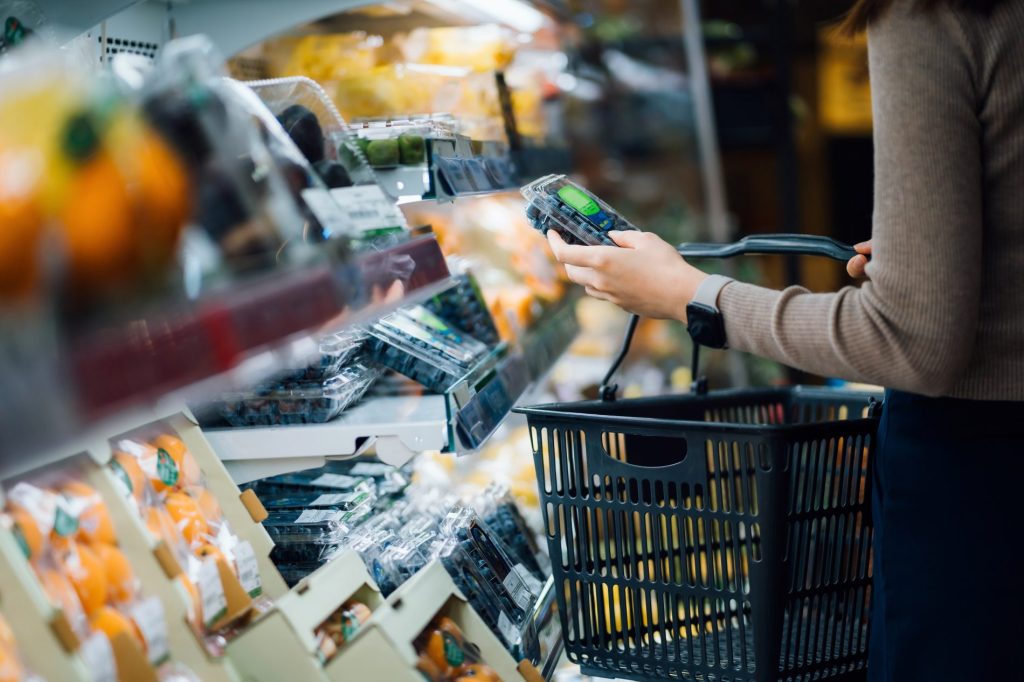Taste rules, but healthfulness and sustainability matter
Over the centuries, sugar has been regarded as a medicine, a spice, a symbol of royalty, a source of wealth and for some, a risk to health.i As an ingredient in a broad range of modern packaged foods, sugar serves two primary purposes—for its taste and recipe properties.
Sugar alternatives—both artificial and naturally-derived—are widely incorporated today to provide sweet taste in foods and beverages with fewer unwanted calories or other unwanted effects on wellness. Plant-based sweeteners are far outpacing sales growth in total Food & Beverage (+17%) versus 2 years ago, according to NielsenIQ Product Insight. Products that claim to contain natural sweeteners have grown a whopping 91%.
Snacking habits and consumer preferences around sweeteners are evolving since COVID-19,ii and the profiles and motivations of consumers who are driving this growth are diverse.iii Consumers want control over their sugar consumption and many also want to avoid harming their health and the environment.iv Taste still rules, but healthfulness and sustainability are significant considerations too.
A cautious love affair with sweets
Consumers seek out sweet flavors because they enjoy them. They make sweetener choices and food product choices for several personal, health and wellness, and environmental reasons:
- To limit caloric intake as a means of weight control and to avoid “empty” calories
- To manage blood sugar (diabetes and other health conditions)
- To limit “total sugar” or “added sugar” consumption as a matter of general wellness
- To avoid artificial or chemical ingredients (preference for natural products, clean label, taste)
- To opt for products whose production is better for the environment
Sometimes these motives may be combined, as when a consumer seeks to limit refined sugar intake and also prefers an “all-natural” alternative sweetener, such as monk fruit, stevia extract, or the more recently introduced Reb M (a rarer extract from the stevia plant). In the past year alone, NielsenIQ Label Insights Search data recorded over 2.1 million searches for Stevia, 1.1 million searches for monk fruit, and 367 thousand searches for Erythritol. Qualified claims of erythritol are included in baking mixes and staples, which accounts for $30.9M and $57.8M in sales last year. This item is often found in Candy, gum, and Mints ($113.7M) according to Nielsen Product Insight.
Ubiquitous nature of sugars
Since soft drinks have been associated with high sugar content, there has long been an interest in using artificial sweeteners in their formulations. “Diet” and “Zero” colas—first introduced in the 1940s—remain big sellers. According to NielsenIQ Product Insight, powered by Label Insight, “diet” is ranked as the number one most searched attribute in soda. However, the sweeteners used to formulate diet beverages have changed over the years.
Alternative sweeteners also appear in non-carbonated, flavored “sports hydration” beverages. The search term “stevia ingredients” is ranked number nine in the same category and grew 19% year-over-year.
Some savory food products also contain sugars, corn sweeteners, or fruit juice where they impart flavoring as well as physical properties, though artificial sweeteners are seldom found where honey and molasses reign supreme.
Freedom from sugars
Almost 40% of households follow a special diet, with consumers watching sugar, carbs, sodium, calories, or some combination of these products.vi According to the latest CDC data (2018), 34.2 million people of all ages (10.5% of the U.S. population) had diabetes. An estimated 88 million adults aged 18 years or older (34.5% of the U.S. population) had prediabetes.vii
Both at-risk and low-risk consumers are growing increasingly conscious of limiting their sugar intake to avoid “empty calories” and other negative health impacts.
When asked what factors are causing them to consume less sugar and/or sugar-sweetened food and beverages this year, more than half (53.1%) cited a desire to prevent or improve a specific health conditionviii. A desire to improve mental wellness was cited by 31% of respondents, and the advice of a medical professional was cited by 42.7%.
Glazed industry response
Brand marketers recognize the desire of many consumers to limit their sugar intake and are calling out grocery products in top categories that contain added sugars while increasing their distribution of “free from” and “reduced” sugar product varieties.
Across top grocery categories, distribution of products labeled “free from added sugar” increased 16.6% in latest 12-month period ending November 6, 2021, while products labeled “free from sweeteners” increased 13.1%.ix Those increases—driven by the beverages, breads, dressings, and snack & variety packs categories—outpaced distribution of products labeled “contains added sugar,” which grew 11.4%.
Distribution of free-from-added-sugar frozen desserts increased 70.5%, compared with “contains added sugar” products, which increased 15.9%.
The industry has room for growth, as consumers demand more transparency. To answer the calls for change, brands Enlightened, HighKey, Koia, Lemon Perfect, Olipop, Super Coffee and Three Wishes formed a brand-agnostic coalition to provide discounts to consumers looking to reduce sugar consumption.x
The Alliance to Control Excessive Sugar (ACES) will help educate consumers on sugar alternatives. Jimmy DeCicco, chair of ACES and chief executive officer of Super Coffee, told Food Business News, “At ACES, we’re committed to showing consumers that there’s a better way—food and beverages that are low in sugar and don’t compromise on taste. Our combined impact is far greater than any single brand alone, which is why we’re banding together for the betterment of our community. This is just the beginning of a movement that we hope will soon pressure every food and beverage company to meet consumers’ needs of combining flavor with function and wellness.”xi
‘Treat yourself’ movement
Sugar alternatives will continue to gain momentum. In the recent webinar “A Look Ahead: Total Wellness in 2022,” NielsenIQ thought leader Sherry Frey indicated that part of the definition of wellness means embracing comfort food, especially during uncertainty caused by COVID-19.
Consumers will continue to search and buy sweetener and sweetener-laced food products in their pursuit of wellness. Brand marketers and retailers are tasked to ensure their product offerings satiate the appetites of the sugar-conscious.
References:
i Saveur
ii IFIC
iii NielsenIQ
iv Motivbase, “The Future of Sweeteners”
v Medical News Today
vi Label Insight
vii National Diabetes Report 2020 – CDC
viii NielsenIQ Online Research
ix NielsenIQ Retail Measurement Services, Product Insider, powered by Label Insight



